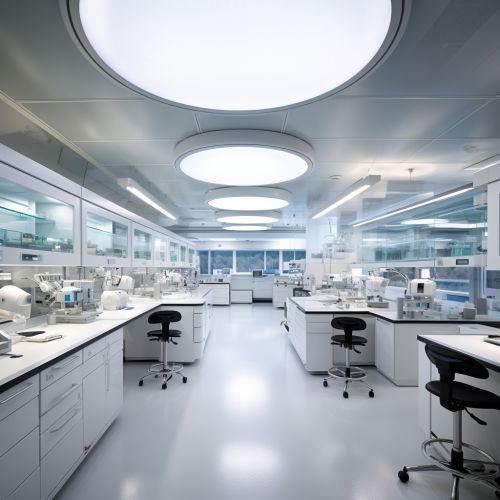Contamination in Molecular Biology
Introduction
Molecular biology is a branch of biology that concerns the molecular basis of biological activity between biomolecules in the various systems of a cell, including the interactions between DNA, RNA, proteins and their biosynthesis, as well as the regulation of these interactions. One of the key challenges in this field is the issue of contamination, which can compromise the integrity of the research and lead to inaccurate results.


Types of Contamination in Molecular Biology
Contamination in molecular biology can be broadly classified into three categories: chemical, biological, and cross-contamination.
Chemical Contamination
Chemical contamination refers to the presence of unwanted chemicals in the sample or the experimental setup. These chemicals can interfere with the reactions and processes being studied, leading to inaccurate results. Common sources of chemical contamination include reagents, labware, and the lab environment itself. For instance, traces of nucleases in the labware can degrade nucleic acids and affect experiments involving DNA or RNA.
Biological Contamination
Biological contamination involves the presence of unwanted biological material in the sample. This could include bacteria, viruses, fungi, or even human DNA. Biological contaminants can affect the growth and behavior of the organisms being studied, and can also lead to the production of false positives in assays. For example, bacterial contamination can affect cell cultures, leading to changes in cell behavior and potentially invalidating the results of the experiment.
Cross-contamination
Cross-contamination refers to the transfer of substances from one sample to another. This can occur through direct contact, through the air, or through shared lab equipment. Cross-contamination can lead to the mixing of samples, making it difficult to obtain accurate and reliable results. For instance, in polymerase chain reaction (PCR) experiments, cross-contamination can lead to the amplification of the wrong DNA sequence.
Prevention of Contamination
Preventing contamination in molecular biology requires careful planning, stringent lab practices, and the use of appropriate lab equipment.
Planning
Proper planning can help minimize the risk of contamination. This includes designing experiments in such a way that the risk of cross-contamination is minimized, for instance by using separate areas or times for different steps of the experiment. It also involves planning for the proper disposal of waste to prevent the spread of contaminants.
Lab Practices
Good lab practices are crucial for preventing contamination. This includes practices such as always wearing lab gloves and changing them often, avoiding touching labware and samples with bare hands, and cleaning lab equipment before and after use. It also includes practices such as using sterilized labware and reagents, and avoiding the use of mouth pipetting.
Lab Equipment
The use of appropriate lab equipment can also help prevent contamination. For example, using dedicated labware for each experiment can help prevent cross-contamination. Similarly, using equipment with built-in contamination prevention features, such as thermal cyclers with heated lids to prevent condensation, can also help reduce the risk of contamination.
Impact of Contamination
Contamination in molecular biology can have serious implications. It can lead to inaccurate results, which in turn can lead to incorrect conclusions being drawn. This can have a significant impact on the progress of research, and can also lead to the publication of incorrect information. In some cases, it can also have financial implications, as contaminated samples may need to be discarded and experiments may need to be repeated.
Conclusion
Contamination is a significant challenge in molecular biology, but it can be managed through careful planning, good lab practices, and the use of appropriate lab equipment. By understanding the types of contamination and how they can be prevented, researchers can ensure the integrity of their experiments and the accuracy of their results.
